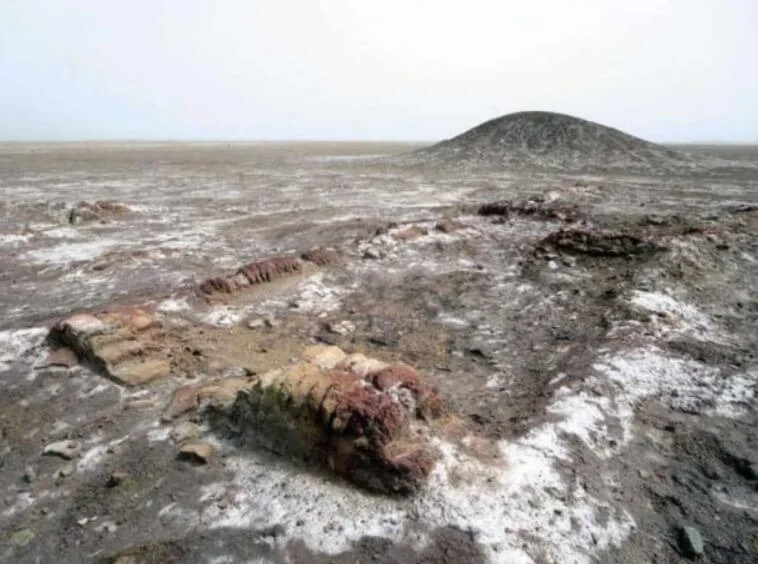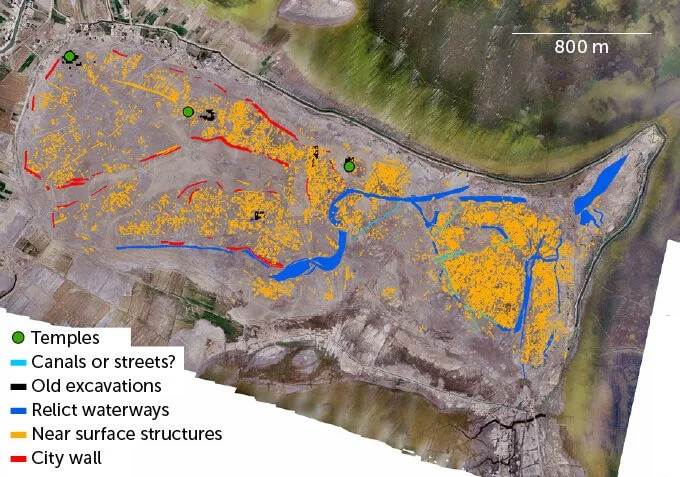A recent drone survey of Lagash, an ancient site situated between the Tigris and Euphrates rivers, has unveiled fascinating insights into a 4,900-year-old civilization. These findings have dramatically reshaped our understanding of urban life nearly five millennia ago in the region that is modern-day Iraq. The survey has revealed that Lagash was, in essence, a "Venice of the Fertile Crescent." The discovery was made possible through extensive remote sensing data collection, particularly using a specialized drone.
The Venice of the Fertile Crescent
Lagash, known today as Tell al-Hiba, was most likely established between 4,900 and 4,600 years ago. Previously believed to be built on raised mounds in the marshes, the drone survey has unveiled a much more complex picture. The ancient settlement was primarily composed of four marsh islands interconnected by waterways. Emily Hammer, an anthropological archaeologist from the University of Pennsylvania, has been at the forefront of this groundbreaking research.
Mud brick foundations and a ziggurat are among the remains of the 3rd millennium BC Sumerian city state of Lagash (Tell al Hiba) northeast of Nasiriyah, Iraq. (David Stanley / CC BY 2.0 )
Challenging the Conventional Model
Contrary to the conventional belief that southern Mesopotamian cities expanded outward from religious complexes into irrigated farmlands surrounded by a single city wall, the findings from Lagash suggest a different narrative. Instead, the city seems to have originated as marsh islands, challenging the standard model of early urbanism.
Dense Architecture and Environmental Features
The drone survey and remote sensing data collected indicate dense architecture spread across an area of approximately 300 hectares. Furthermore, signs of marshy and watery local environmental conditions have been identified, suggesting that the city sectors likely began as marsh islands. This discovery is supported by various pieces of evidence found during the survey.
E. HAMMER/J. ANTHROPOLOGICAL ARCHAEOLOGY 2022
Evidence of Life on the Islands
Among the intriguing discoveries are canals on one of the islands, hinting at a focus on fishing and collecting reeds for construction. The presence of gated walls, city streets, and large kilns on two other islands further reinforces the notion that these marsh islands were indeed inhabited and developed. Additionally, the drone photos have uncovered harbors that could have facilitated boat travel between different city sectors, along with potential footbridge remnants awaiting excavation for more insights.
The recent drone survey of Lagash, revealing it as the "Venice of the Fertile Crescent," has not only provided a unique glimpse into an ancient civilization but has also challenged established theories of urban development in the region. Emily Hammer's groundbreaking research, supported by remote sensing technology, continues to reshape our understanding of the past, highlighting the complexity and adaptability of early urban societies in Mesopotamia. As further excavations and analysis unfold, Lagash is poised to become a pivotal site in the study of ancient urbanism.









